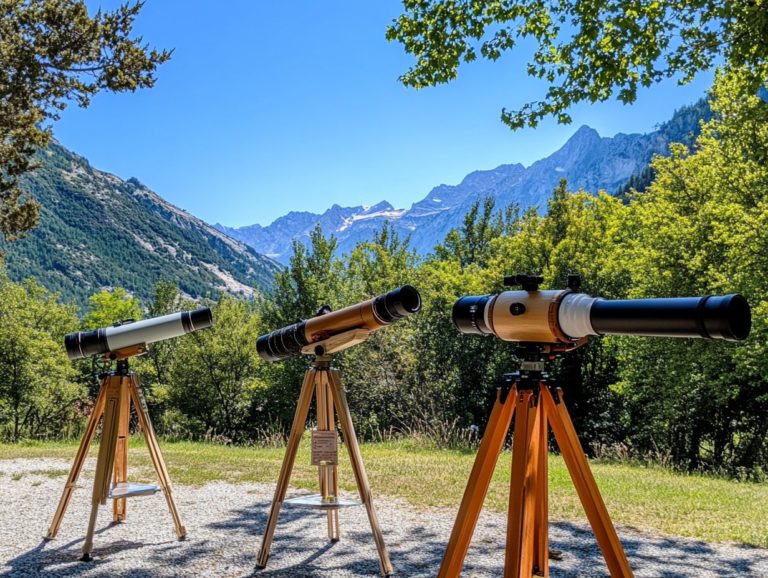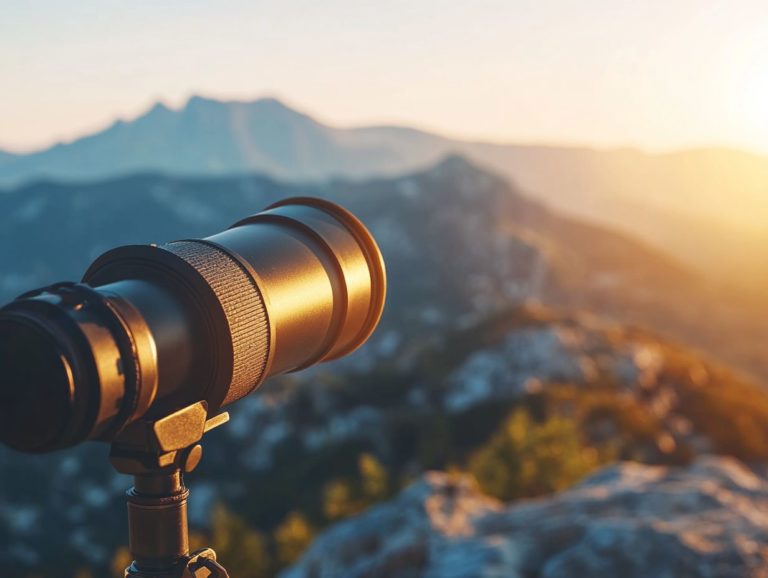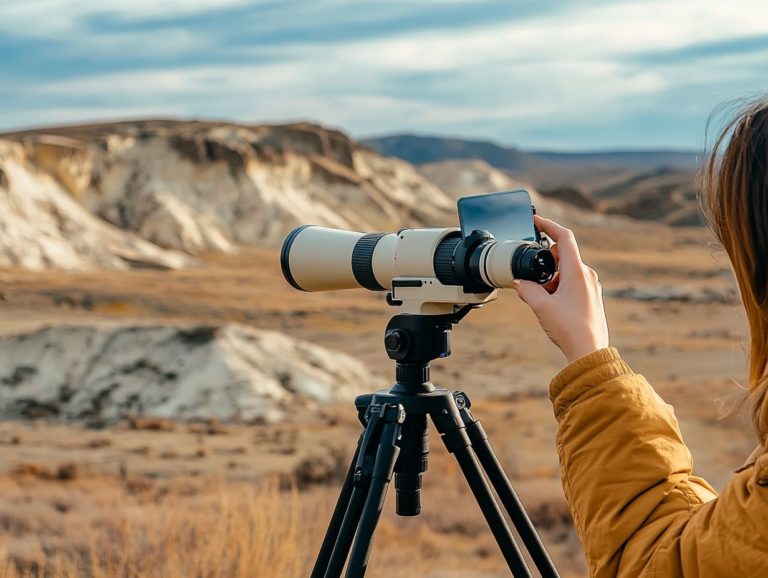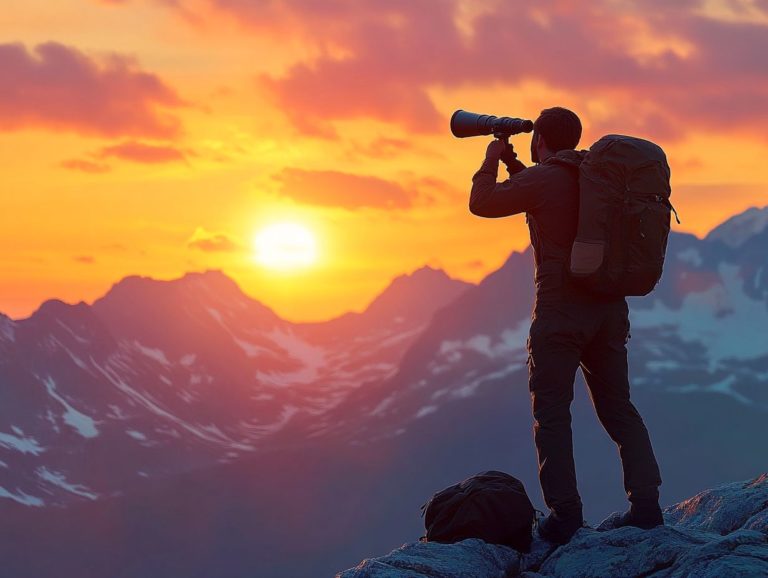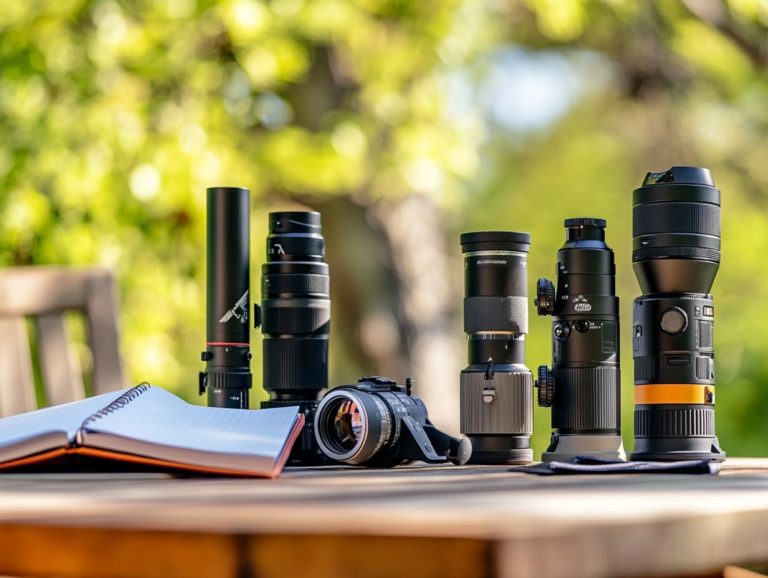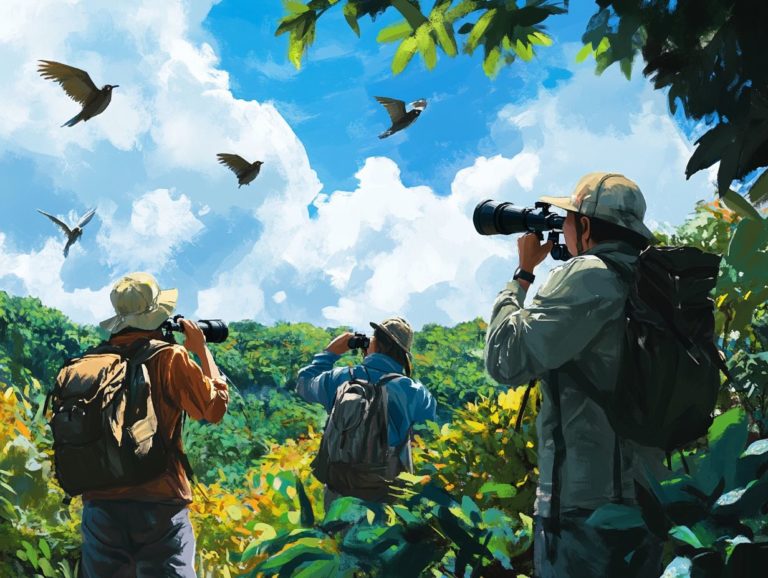How to Adapt Your Spotting Scope for Wildlife Photography
Contents
- Unlock the Beauty of Nature: Your Guide to Spotting Scopes
- Key Takeaways:
- Understanding Spotting Scopes and Their Uses
- Benefits of Using a Spotting Scope for Wildlife Photography
- Choosing the Right Spotting Scope for Wildlife Photography
- Adapting Your Spotting Scope for Photography
- Tips for Capturing Great Wildlife Photos with a Spotting Scope
- Maintaining and Protecting Your Spotting Scope
- Frequently Asked Questions
- What is a spotting scope and why is it useful for wildlife photography?
- How do I attach my camera to a spotting scope for wildlife photography?
- What is the best magnification to use for wildlife photography with a spotting scope?
- Can I use a spotting scope for wildlife photography without a tripod?
- Do I need a special camera for digiscoping with a spotting scope?
- What are some tips for adapting a spotting scope for wildlife photography?
Unlock the Beauty of Nature: Your Guide to Spotting Scopes
Spotting scopes are essential tools for wildlife enthusiasts and photographers alike, combining portability with impressive magnification. They are vital for wildlife viewing and capturing stunning images of nature.
This article delves into the features of spotting scopes and the numerous advantages they offer for wildlife photography. You ll find guidance on selecting the right scope, adapting it for photography, and essential tips for snapping stunning photos.
It also offers insights on maintenance, ensuring your gear remains in peak condition so you can maximize the performance of your scope.
Key Takeaways:
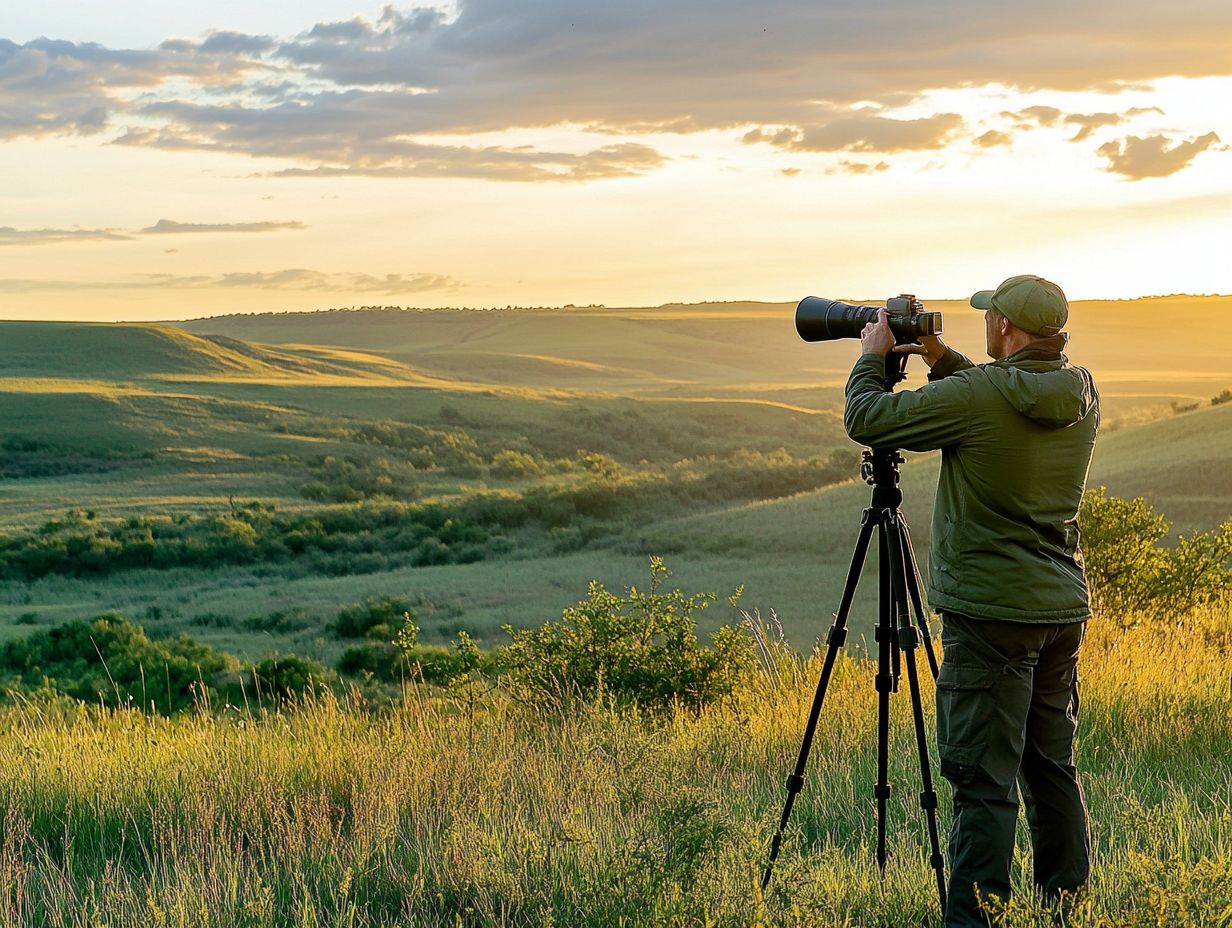
- Understand the versatility of spotting scopes and how they can enhance your wildlife photography experience.
- Choose a spotting scope that meets your specific needs and use third-party attachments to optimize its potential for photography.
- Practice patience, composition, and lighting techniques to capture stunning wildlife photos.
Understanding Spotting Scopes and Their Uses
Spotting scopes are game-changers for wildlife photography, meticulously crafted to deliver enhanced visual clarity and detail. They excel in observing subjects in their natural habitats by using advanced features like multi-coated lenses and Bak4 prisms.
These optical wonders shine in scenarios where distance presents a challenge, offering superior magnification, exceptional image resolution, and unparalleled lens quality compared to standard binoculars.
Whether you’re birdwatching in the breathtaking Great Smoky Mountains or capturing images with your Canon EOS setup or Leica Televid, mastering a spotting scope can profoundly elevate your viewing experience.
What is a Spotting Scope?
A spotting scope is your ticket to high-powered optical excellence, crafted for those who seek intricate views of distant subjects. With a sophisticated blend of lenses and prisms, it delivers superior image quality that will elevate your outdoor experience.
The adjustable magnification range, typically from 15x to 60x, allows you to seize stunning details from afar, turning your observations into moments of wonder. The objective lens size, usually between 60mm and 80mm, is essential for light gathering and achieving optimal clarity, even in low-light conditions.
Equipped with specialized lens coatings, your scope enhances light transmission while minimizing glare. This offers sharp and vibrant visuals that are crucial for nature photography. Bak4 prisms make a big difference, giving you brighter and clearer images by optimizing light reflection throughout the optics.
These specifications are not just numbers; they are crucial for wildlife photography, significantly boosting your ability to identify and appreciate the intricate details of your subjects in action.
Benefits of Using a Spotting Scope for Wildlife Photography
Utilizing a spotting scope for wildlife photography presents several notable advantages, primarily due to its superior magnification capabilities and exceptional image quality when compared to traditional cameras and binoculars. To capture those perfect moments, it’s also helpful to learn how to take photos while bird watching. High-quality lens options, like the Canon 800mm, further enhance these benefits.
Don t miss out on the chance to capture stunning wildlife photos. Choose the right scope today!
Enhanced Magnification and Clarity
A spotting scope greatly benefits wildlife photography with its enhanced magnification range. This allows you to capture clear images from impressive distances.
The magnification elevates your ability to observe subjects closely and enhances image clarity. Details like the textures of fur and feathers become pronounced, turning an ordinary shot into a stunning portrayal.
To truly unlock these benefits, invest in high-end scopes and quality lens attachments. A good digiscope adapter, for instance, improves optics and minimizes distortion, giving you stunning clarity in your photos.
Flexibility and Portability

Spotting scopes offer great flexibility and portability, perfect for wildlife viewing in different environments. These scopes are designed for easy transport, whether you re in rugged terrains or tranquil settings.
As a photographer, setting up your gear quickly is essential to capture fleeting moments in nature. The portability of spotting scopes allows you to move effortlessly from a peaceful lakeside to a lively forest.
Pair your scope with a high-quality tripod for the stability you need, especially in windy conditions. A lightweight, adjustable tripod enhances your mobility and adapts to changing landscapes.
Choosing the Right Spotting Scope for Wildlife Photography
Selecting the ideal spotting scope, like those from Swarovski Optik or Tamron zoom, is crucial for quality images. The right equipment ensures you capture fleeting moments with clarity.
Factors to Consider
When choosing a spotting scope, consider factors like lens quality, objective size, eye relief, field of view, and waterproof construction. These elements affect clarity, brightness, and detail in your images.
High-quality lenses ensure sharp and vibrant shots. An appropriately sized objective lets in more light, which is vital for low-light situations.
Comfort is key. Enough eye relief allows you to focus without straining your eyes during long sessions. A wider field of view helps you track moving subjects effortlessly.
Adapting Your Spotting Scope for Photography
Adapting your spotting scope can open new possibilities for capturing breathtaking wildlife images. To enhance your experience, consider learning how to make the most of your spotting scope setup. Using a smartphone mounting system and digiscoping tools can elevate your photography to new heights.
Don t miss out on capturing stunning wildlife moments explore the world of wildlife photography with your spotting scope!
Equipment and Techniques
Utilizing the right equipment and techniques is crucial for adapting your spotting scope effectively for wildlife photography. For those interested in digiscoping, which combines digital photography with spotting scopes, setting up your spotting scope properly can enhance your wildlife photography. This includes using specific lens attachments and mastering the art of digiscoping.
Using these tools and understanding various digiscoping techniques will improve your wildlife images. Selecting the right gear like sturdy tripods for stability, adapters for seamless lens connections, and high-quality camera systems enhances your experience.
Understanding how to adjust settings for different lighting conditions is essential. Pay attention to composition, subject framing, and selecting the right lens types. For bird watchers, knowing how to use a spotting scope for bird identification can enhance your photography. Proper lens attachments expand the capabilities of your spotting scope and ensure that your captures are clear and detailed, vital for any wildlife photographer aiming for optimal results.
Tips for Capturing Great Wildlife Photos with a Spotting Scope
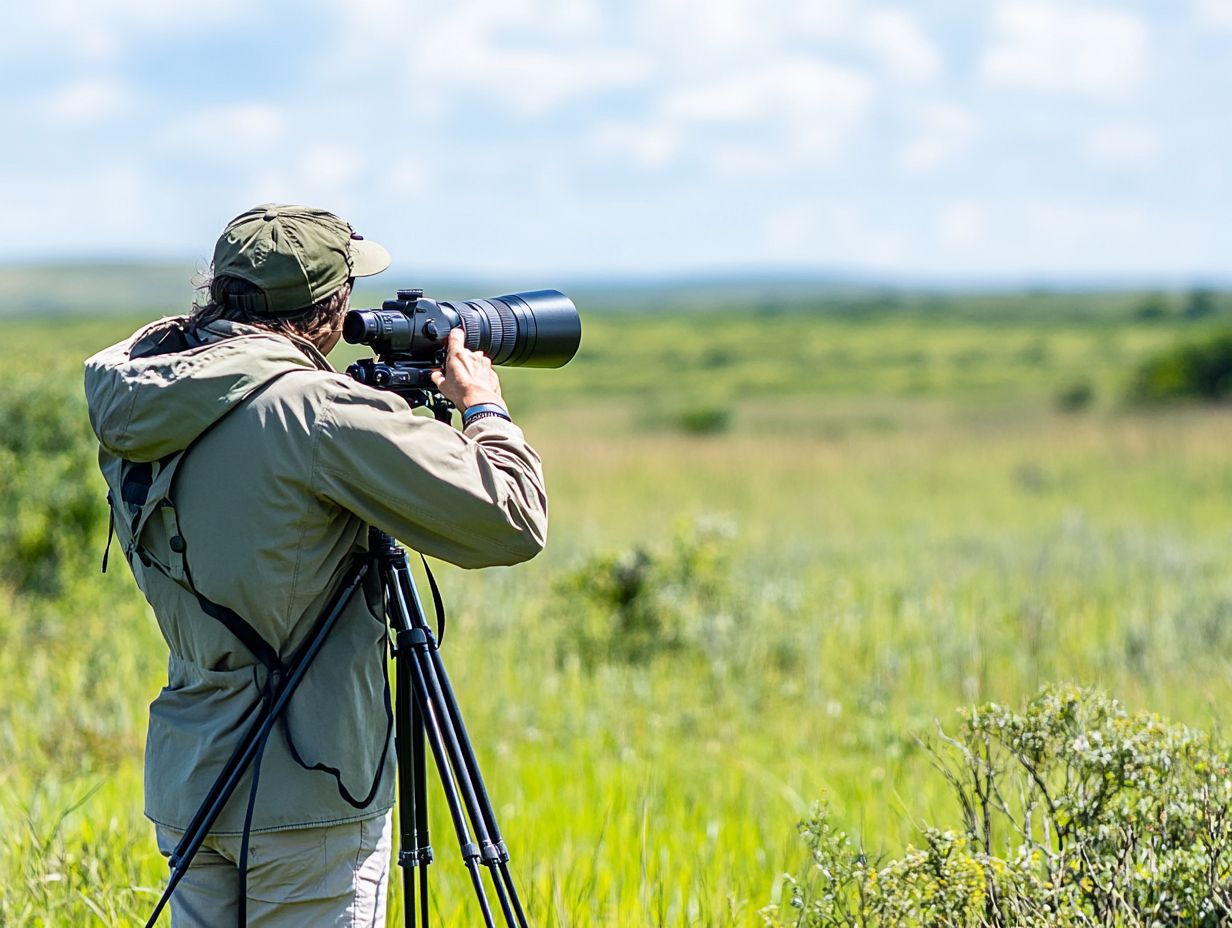
Capturing stunning wildlife photos with a spotting scope demands a blend of skill and patience. To enhance your technique, learn how to use spotting scopes for nature observation and focus on composition, lighting, and a methodical approach to elevate your wildlife photography.
Each element plays a vital role in transforming a simple shot into a captivating image, showcasing the colors and details of nature.
Composition and Lighting
Mastering composition and lighting is essential for achieving clarity and visual appeal in wildlife photography with a spotting scope. Concentrate on positioning your subjects within the frame and utilize the rule of thirds to create a dynamic balance that naturally draws the viewer s eye.
Don’t shy away from experimenting with different angles; this can unveil unique perspectives that add depth to each shot. Timing is also crucial capture wildlife during the golden hours right after sunrise or just before sunset for the best quality of light.
This warm glow enriches colors and highlights intricate details. By thoughtfully considering these strategies, you can elevate your wildlife photography to extraordinary heights.
Patience and Persistence
Patience and persistence are essential for wildlife photographers using spotting scopes. Waiting for that perfect moment can yield truly rewarding images.
The key to capturing breathtaking wildlife shots lies in your ability to remain still and composed. Sudden movements or noises can startle animals, sending them into hiding.
Understanding the natural behaviors of different species elevates your experience. Knowing when animals are most active allows you to position yourself strategically without causing a disturbance.
Taking deep breaths and focusing on your surroundings helps maintain a peaceful state of mind. This makes the difference between a fleeting glimpse of beauty and a stunning photograph of wildlife.
Maintaining and Protecting Your Spotting Scope
Keep your spotting scope in top shape! Proper maintenance and protection are crucial for ensuring its longevity and optimal performance, especially when frequently used outdoors.
Taking the time to care for your birdwatching gear will greatly enhance your experience and preserve its functionality for years to come.
Start practicing these tips today to capture breathtaking wildlife photos!
Cleaning and Storage Tips
Cleaning your spotting scope is essential for its performance. Use the right storage techniques to protect sensitive components from damage.
By using the correct cleaning methods, you can enhance the performance and longevity of this critical equipment. Reach for a soft microfiber cloth and a lens cleaning solution specifically made for optics. These tools eliminate dirt and smudges effectively, reducing the risk of scratches.
When cleaning the eyepieces and other delicate parts, use gentle, circular motions for the best results. When your scope is not in use, store it securely in a protective case. This step safeguards it from dust, moisture, and temperature fluctuations, which can cause long-term damage.
Frequently Asked Questions
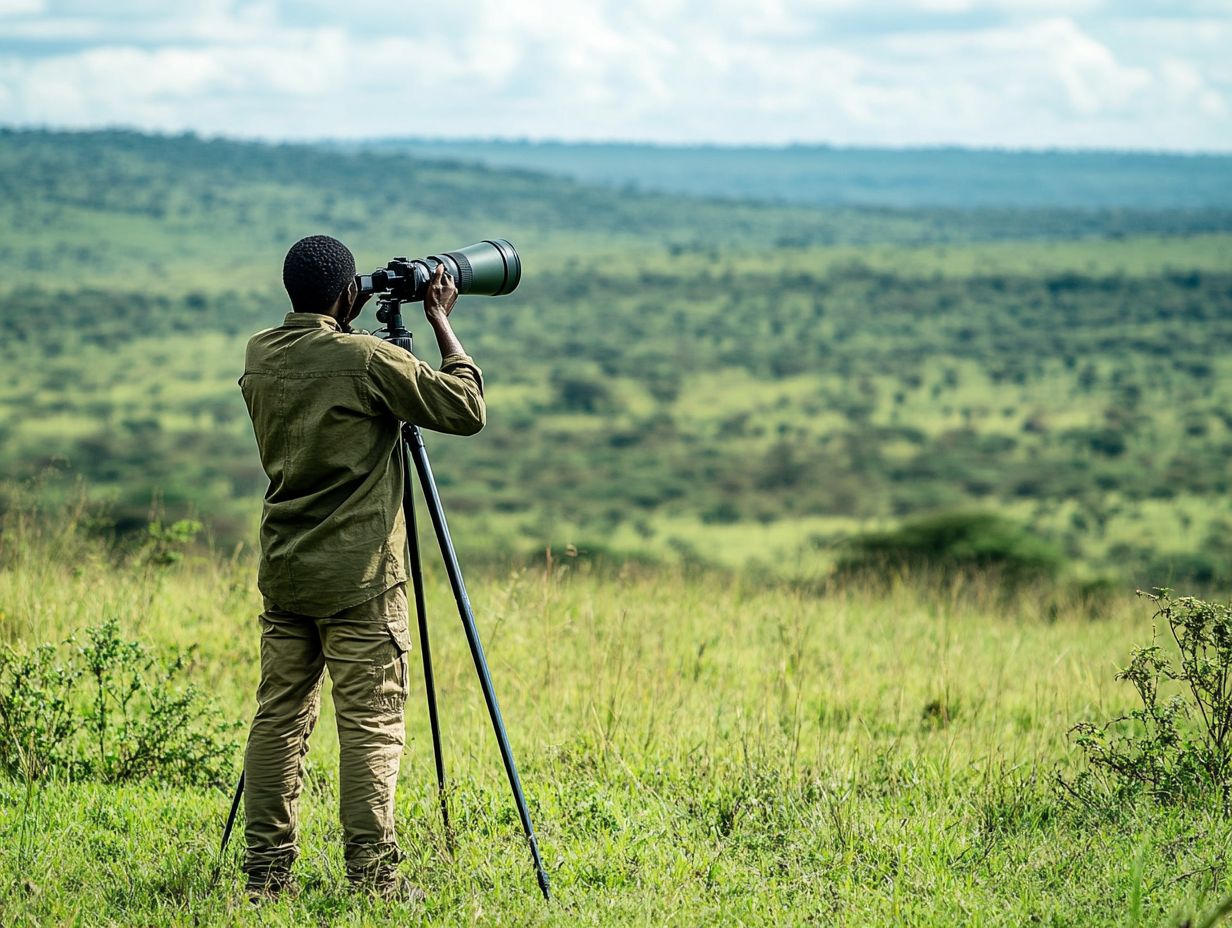
What is a spotting scope and why is it useful for wildlife photography?
A spotting scope is a small, portable telescope for observing distant objects. You can adapt it for wildlife photography by attaching a camera to the eyepiece, allowing for high magnification and clear images of animals. To enhance your birdwatching experience, especially at night, check out this guide on how to use your spotting scope for birdwatching at night.
How do I attach my camera to a spotting scope for wildlife photography?
There are several methods to attach a camera to a spotting scope, including using a universal digiscoping adapter or a T-ring and adapter. These allow you to connect your camera directly to the eyepiece for stable, sharp images.
What is the best magnification to use for wildlife photography with a spotting scope?
The ideal magnification depends on the distance to your subject and the animal’s size. Generally, a range of 20x-40x is recommended for wildlife photography, balancing magnification and image stability.
Can I use a spotting scope for wildlife photography without a tripod?
While you can handhold a spotting scope, it’s not recommended. Use a tripod or monopod to stabilize the scope for clear photos.
Do I need a special camera for digiscoping with a spotting scope?
No special camera is needed for digiscoping. Any digital camera with a removable lens works with the right adapter. However, a camera with manual focus and aperture settings may offer more control.
What are some tips for adapting a spotting scope for wildlife photography?
Helpful tips for adapting your spotting scope for wildlife photography include using a remote shutter release to avoid camera shake, using a lens hood to reduce glare, and experimenting with different magnifications and settings for the best results.

